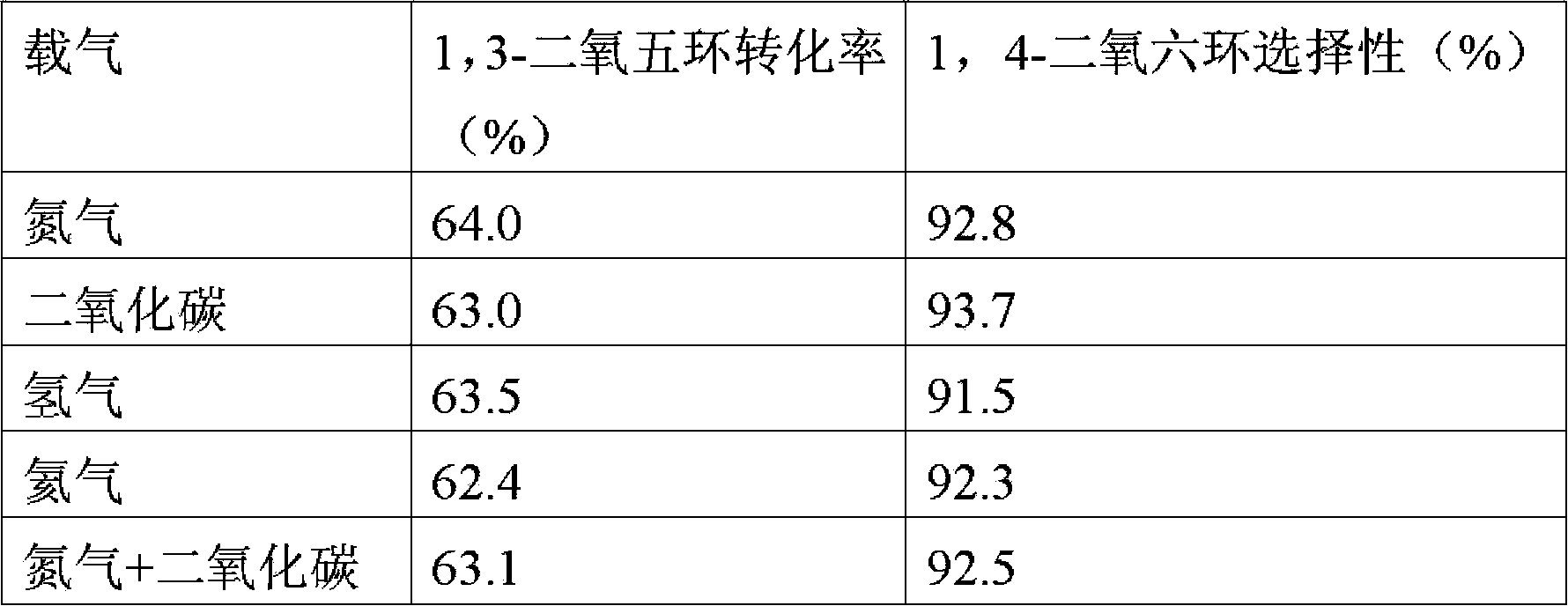Method used for preparing 1,4-dioxane from 1,3-dioxolane
A kind of technology of dioxane and dioxane, applied in the field of preparation 1
- Summary
- Abstract
- Description
- Claims
- Application Information
AI Technical Summary
Problems solved by technology
Method used
Image
Examples
Embodiment 1
[0019] The 40-60 mesh catalyst obtained by pressing H-β (Si / Al=25) molecular sieve powder into tablets, crushing and sieving. Put 0.6g of catalyst into a reactor with an inner diameter of 8mm, raise the temperature to 500°C in a nitrogen atmosphere, keep the temperature at this temperature for 1h, and then cool down naturally to the reaction temperature of 130°C. Use the carrier gas CO to carry 1,3-dioxane into the reaction tube, the partial pressure of 1,3-dioxane is 42KPa (calculated by Clausius-Clapeyron), and the volume space velocity of CO is 2120h -1 , the reaction was carried out under normal pressure. The reactants were analyzed by online chromatography, the conversion rate of 1,3-dioxane was 64.3%, and the selectivity of 1,4-dioxane was 91.2%.
Embodiment 2
[0021] Other conditions were the same as in Example 1, and the catalytic performance of different solid acid catalysts to generate 1,4-dioxane from 1,3-dioxapenta was evaluated, and the reaction effluent was analyzed by online chromatography. The results are shown in Table 1.
[0022] Table 1
[0023] solid acid
Embodiment 3
[0025] Respectively at 120°C, 140°C, and 160°C, other conditions were the same as in Example 1, and the influence of temperature on the disproportionation of 1,3-dioxane to generate 1,4-dioxane was investigated, and the reaction effluent was obtained by online chromatography analyze. The results are shown in Table 2.
[0026] Table 2
[0027] temperature(℃)
PUM
 Login to View More
Login to View More Abstract
Description
Claims
Application Information
 Login to View More
Login to View More - R&D
- Intellectual Property
- Life Sciences
- Materials
- Tech Scout
- Unparalleled Data Quality
- Higher Quality Content
- 60% Fewer Hallucinations
Browse by: Latest US Patents, China's latest patents, Technical Efficacy Thesaurus, Application Domain, Technology Topic, Popular Technical Reports.
© 2025 PatSnap. All rights reserved.Legal|Privacy policy|Modern Slavery Act Transparency Statement|Sitemap|About US| Contact US: help@patsnap.com



